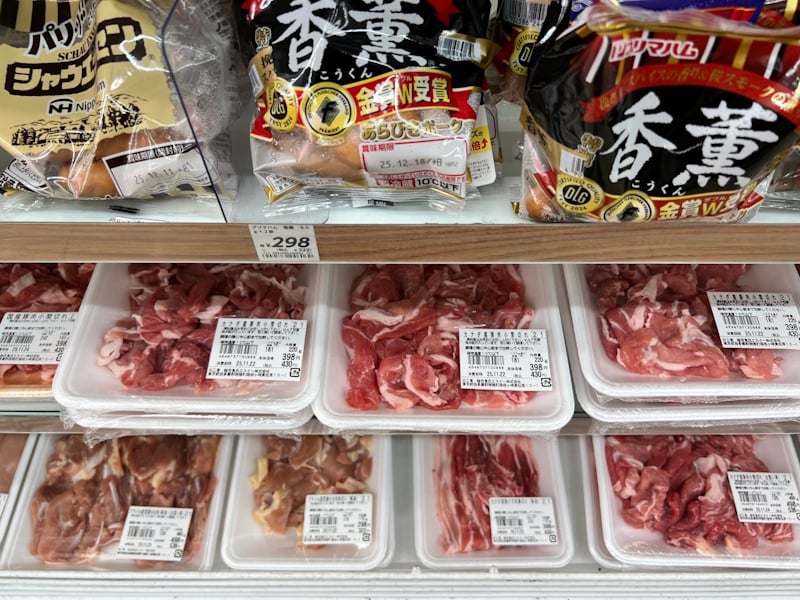Times are tough in Japan. With wages stagnant and prices high, many households are struggling to make ends meet. A new product at Lawson seemed to underscore Japan’s predicament, with some arguing it’s a sign of how “poor” the country has become. But the store says it’s just trying to give its customers more options.
248 yen for rice and sauce
The debate centers around Lawson Store 100’s BBQ Sauce Rice (焼き肉のたれご飯; yakiniku no tare gohan). The dish currently retails for a mere 248 yen ($1.58), tax included. That’s because the dish is as simple as you can get: it’s just rice and yakiniku sauce – no meat included.
It’s not the first time such a simple dish has been offered by a local chain. Super Tamade in Osaka has sold a version of this previously. However, it’s the first time a major Japanese combini has offered it.
According to Shūkan Josei Prime, a TikToker posted about the dish shortly after arriving in Japan from overseas. That led to a firestorm of comments both on TikTok and on social media site X.
Some users took it as a sign of Japan’s declining prosperity. “In 2000, you could have bought four burgers from McDonald’s for that,” one griped. Others compared the dish unfavorably to the nutritious meals served to prisoners.
“Poor Japan”
The product struck more of a nerve than it maybe should have. Lawson inadvertently stepped into a national debate over a question that’s been brewing here for years:
Is Japan a “poor country”?
The charge has floated around for a while. Many here talk about the past three decades in Japan (since the collapse of the 1980s-90s economic bubble) as “the lost 30 years.” (Perhaps not coincidentally, wage growth in Japan has remained stagnant during that period.)
While the country still has the fourth-largest Gross National Product in the world, its per capita GDP as of 2021 ranked it around 28th. Surveys of Japan’s youth have shown them describing their lives in modern Japan with words such as “trapped” and “suffocating.” There’s a general feeling that the country is currently structured to direct public money into private pockets.
This trend is reflected in statistics. A 2017 OECD survey showed Japan had the seventh-highest poverty rate of any country surveyed, placing it alongside much weaker economies such as Chile, Mexico, and Estonia.
Planning a trip to Japan? Get an authentic, interpreted experience from Unseen Japan Tours and see a side of the country others miss!

“Noah [at Unseen Japan] put together an itinerary that didn’t lock us in and we could travel at our own pace. In Tokyo, he guided us personally on a walking tour. Overall, he made our Japan trip an experience not to forget.” – Kate and Simon S., Australia

See a side of Tokyo that other tourists can’t. Book a tour with Unseen Japan Tours – we’ll tailor your trip to your interests and guide you through experiences usually closed off to non-Japanese speakers.


Want more news and views from Japan? Donate $5/month ($60 one-time donation) to the Unseen Japan Journalism Fund to join Unseen Japan Insider. You’ll get our Insider newsletter with more news and deep dives, a chance to get your burning Japan questions answered, and a voice in our future editorial direction.
Pulling together a combini meal
 Lawson Store 100 carries fresh meat, vegetables, and other goods you’d usually only find at a full grocery store. (Picture: Unseen Japan)
Lawson Store 100 carries fresh meat, vegetables, and other goods you’d usually only find at a full grocery store. (Picture: Unseen Japan)
So is the Lawson “rice only” meal part of this trend, highlighting how destitute Japan has become?
For its part, Lawson defended the dish. “In recent years, we’ve seen the growth of this convenient, time-saving approach to eating, with a focus on dishes you can season and on side dishes you can pair with your favorite foods. We’re selling this product in response to these needs.”
Honestly, this makes sense.
It’s true that Japan has taken an economic beating this past couple of years. The cost of rice has been a prominent example, with prices doubling compared to a year ago. The situation became so dire that the Japanese government released some of its strategic rice reserves to provide consumers with relief.
Rice hasn’t been the only victim. Utility prices have surged in recent years, with some businesses saying it’s driving them close to the point of bankruptcy. An unexpected cabbage shortage earlier this year put pressure on consumers and on businesses such as tonkatsu restaurants.
However, it’s also true that combini are structured to…well, be convenient! In particular, Lawson Store 100 is a variation of the traditional Lawson combini that works more like a “mini-grocery store.” It focuses on providing ingredients you can combine to create homemade meals quickly.
Like most combinis in Japan, it sells an assortment of single-serving foods, such as small trays of chicken, pork, or fish. There’s also its famous hot food bar, with the store’s Karaage-kun fried chicken, chicken meatballs, yakitori meat skewers, and a variety of other nibbles. These ingredients, along with prepared rice, can be mixed and matched to create a reasonably healthy and affordable meal.
For its part, Lawson recommends pairing the new dish with karaage and yakitori, and topping it with a fried or slow-boiled egg (温泉卵; onsen tamago) – also available for purchase at Lawson. It denies that the dish was intended as any sort of meta-commentary on Japan’s economy.
Low wages and rising prices remain a serious problem for Japan. Sometimes, however, a plate of rice is just a plate of rice.
Sources
ローソンストア100『焼肉のタレかけご飯』(税込268円)が“不景気の象徴”と話題、同社は「意図したものではない」. Shukan Josei Prime
なぜ若者は日本を「貧しい国」と考えるのか 富裕層に属する人たちほど「貧乏くさい」社会をどう変える. JBPress
「貧困大国ニッポン」でなぜこれほど貧困者が増えたのか…「先進主要国」なのに「高すぎる貧困率」. Gendai Media


Dining and Cooking